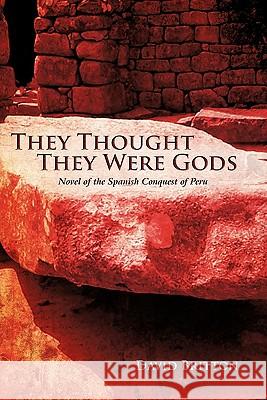They Thought They Were Gods: Novel of the Spanish Conquest of Peru » książka
They Thought They Were Gods: Novel of the Spanish Conquest of Peru
ISBN-13: 9781452075211 / Angielski / Miękka / 2011 / 228 str.
This novel is an account of the Spanish invasion and conquest of Peru, and of the native struggle, led by Manco Inca Yupanqui, to defeat it. It traces the history of those years from the death of the last great Inca, Huayna Capac, in 1528, probably from smallpox, which the Spanish brought to South America, to the death of the last Conquistadore, Don Gonzalo Pizarro, who was executed for treason in 1548, following his abortive rebellion against Spanish imperial rule.
The story is told by an Inca nobleman, Huayna Rimac, who was Curaca (Governor) of Machu Picchu and, later, of Vilcabamba, as well as being the age mate, confidant, friend, and aide de camp of Manco Inca. The book does not try to present a balanced and fair account of the conflict between the two empires. It is an Inca account of the conflict. Huayna Rimac, however, as time went on, began to appreciate the strengths of the Spanish, as well as their weaknesses. Eventually, he was, reluctantly, forced to give them credit for their achievements.
The book clearly shows the differences between the two sides in a clash, which was as much cultural as military. The two empires could not coexist side by side. One culture would have to yield to the other. The book makes it clear that the decisive factor in the struggle was technological. The Incas, unfortunately, did not have access to iron, whereas the Spanish did. Spanish steel was some of the best in Europe in that period, whereas the Incas used bronze. The result was inevitable. However, the book makes it clear that Inca courage and determination came agonizingly close to overcoming superior Spanish technology. At the end Huayna Rimac is left to ponder his own future in a Peru dominated by Spanish power.












